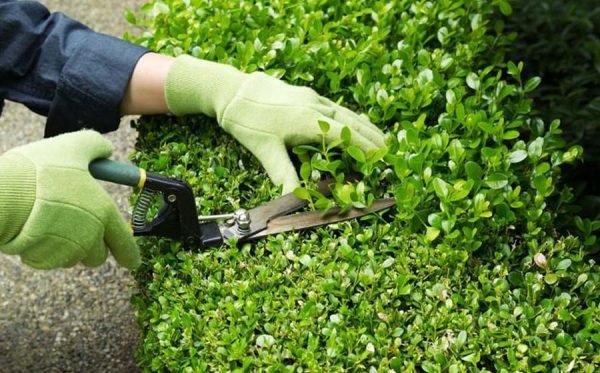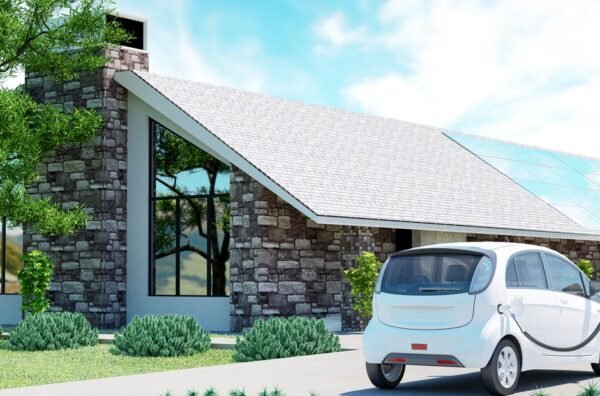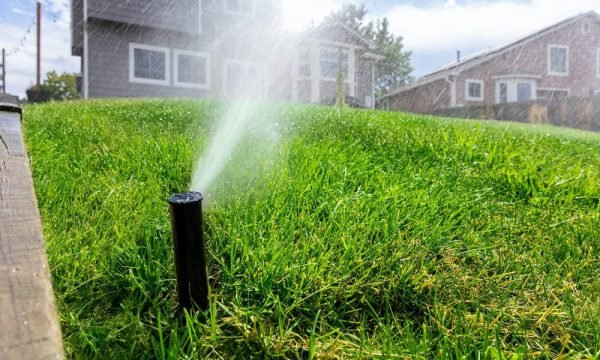There are so many variables to do-it-yourself landscaping. This includes budget, skills, the climate of your region, your personal design tastes, how you’ll use your yard and who will be using it. The good news is that whether you’re starting from scratch or updating your old, outdated and overgrown outdoor space, there are certain principles that should guide your do-it-yourself landscape design. These principles apply no matter the size of your garden or budget and they support even the most beginner gardener to come up with something amazing.
Guiding principles don’t have to be constraining. They can be applied by any gardener, amateur or professional, and they result in a more successful, satisfying design. You can still get creative, but creative in a way that incorporates tried and tested methods to make the most of your outdoor space.

Table of Contents
Guiding principles for do-it-yourself landscaping
1. The law of significant enclosure
One might think that the more open an outdoor space is, the better a garden feels. The law of significant enclosure disputes this, insisting that ‘enclosure’ be a basic feature of every residential garden.
Your garden is a source of refuge and having an outdoor space to call your own provides you with an additional (and natural) living area. Think of your garden as a room that requires walls at least one-third the length of the horizontal space you’re inhabiting. Your walls can be shrubs, trees, trellises with vining plants, or even hanging fabric. You can also combine different elements for a more eclectic look.
2. Lifestyle matters
A landscape can be as unique as the gardener who creates it, but it should suit what you are willing to give it in terms of time and effort. Consider your expectations, evaluate your available space, observe your sunlight exposure, and think about the time you’d like to devote to your garden. Will your garden be a high-traffic area? Do you have kids or pets? What will the space most commonly be used for? These types of questions help you to determine the type of turf you choose, the food in which you grow – just about everything you put into your garden.
3. Start big
Faced with the decision to make a staircase wider or narrower, a pool longer or shorter, a pergola lower or higher, the general rule is that size matters and that big is better. When possible, go big on your prominent features and when planting, start with the big and then gradually add the small. Start with the trees, then the shrubs, then perennials, then the ground cover. Your ‘big’ design elements and ‘big’ plantings will give your garden structure and will set the scene for your little plants to be the crowning glory of your surrounding landscape.
4. The regulating line
The line is one of the most important and useful of all design elements. Everything in the garden involves line, and by following the regulating line (a doorway, a building edge, a window) or a distinctive landscape feature (prominent tree, existing pool, property boundary) you can follow an imaginary line that helps connect and organise the design.
Strong lines draw your eye into the landscape, directing both where people look and where they go. There are four main ways to describe strong lines: curved, straight, horizontal, and vertical. None is more important than another, as each has different effects. Curved lines shape informal garden beds and add interest to pathways. Straight lines evoke a sense of order. Horizontal lines create a sense of stability. Vertical lines project movement. Mix it up and have a bit of fun with your lines!
5. The golden rectangle
For centuries, designers have used the golden rectangle in garden design. The Great Pyramids of Giza, the Greek Parthenon, Ryoanji Temple – the golden rectangle has been used throughout history as a guide to a pleasing sense of balance and order.
The Golden Rectangle is a rectangle where the ratio of the short side to the long side equals the ratio of the long side to the sum of both sides. Written mathematically the Golden Rectangle is:
A = Short Side
B = Long Side
(A/B) = (B/(A+B))
Alternatively, if you know the length of the short side of the rectangle, simply multiply it by the ‘Golden Ratio’ (1.618) to derive the appropriate length of the long side of the rectangle. For example, if the short side is 8 feet long (2.4 metres), the long side should be approximately 13 feet long (3.9 metres).
Used in everything from flower beds and lawns to terraces and arbors, the golden rectangle fosters organic and natural looking compositions that are aesthetically pleasing to the eye.
6. Balance is a state of being
Research tells us that we are most comfortable in landscapes that have a sense of balance. There are two major types of balance: symmetrical and asymmetrical.
Symmetrical balance is used in formal landscapes when one side of the landscape is a mirror image of the opposite side. This type of balance appears to be rather stiff in appearance and often is highly maintained. Asymmetrical balance, also known as informal balance, differs from one side to the other and appears to be relaxing and free-flowing. Whichever you choose, balance is a state of being.
7. Focalisation
Any good design has a focal point – the place where the viewer’s eye is first attracted. Each area of your landscape design should have a focal point, which allows the viewer to gradually discover other plants and features in your garden. Focal points can be scaled to the size of your garden and can even be seasonal.
Getting started
If you’re wondering where to start with your landscape creation or transformation, look no further than your front yard. It’s the first thing you see when you drive up to your house and it’s your chance to wow guests before they’ve even made it inside. Getting your front yard looking great gives you the inspiration and confidence to tackle the back, where you can add more personalisation and more function.
Laying instant turf is an economical way to get started and can add thousands to your property with added curb appeal. The green space created by an instant lawn also has benefits for your physical and mental health, and will play a huge role in your motivation for completing your do-it-yourself landscape design.
Author’s Bio:
Jacqueline Coombe has been a prolific reader since childhood, and now channels her love of the written word into writing content on a range of topics from business, marketing and finance to travel and lifestyle. Jacqueline is also a Principal Consultant specialising in Search + Content Marketing at international digital marketing agency Webprofits.





